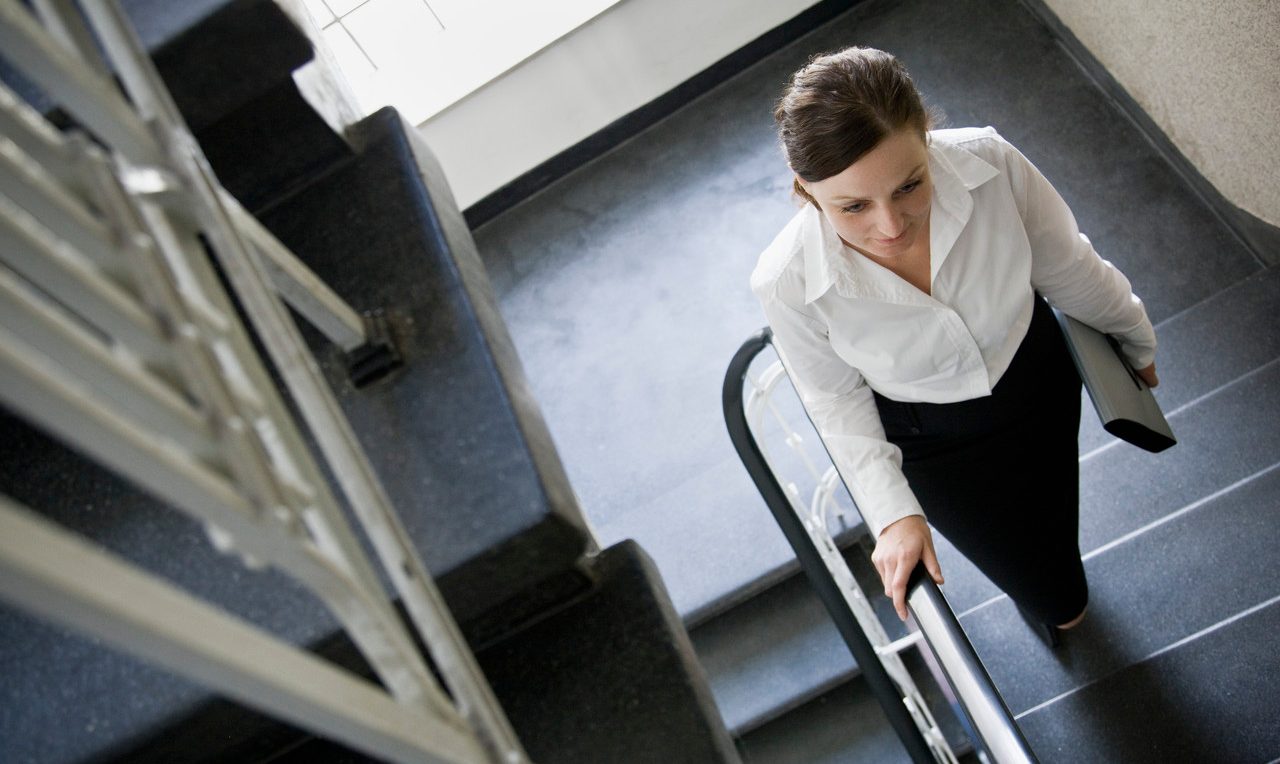Exercises You Can Do at Work

Boost your health with exercises you can easily fit into your workday.
No matter how clean and comfortable your office is, it can pose a serious danger to your health — if you work at a desk all day. Too many sedentary hours in the workplace raise the risk for serious diseases, contribute to weight gain, and may even shorten your life.
"We only have to look around to know that many jobs in today's workplace primarily involve sitting and little movement. This is clearly the norm, compared to jobs of the past that required more physical activity," said Steve Blair, PhD, a University of South Carolina public health researcher.
In fact, 50 years ago more than half of jobs in the U.S. involved moderate physical activity, compared to 20 percent today. And a typical worker burns up 100 fewer calories each day than his or her counterpart in the 1960s. That could be a factor behind the current obesity epidemic, according to research headed by Blair.
Numerous studies have also linked sitting for hours each day to an increased risk of heart disease, diabetes, and even premature death. But researchers have found you can counter some of the hazards of too much sitting with simple exercises at work.
For example, standing up and walking in place, walking up and down the hall, or performing other moderate exercises for just two minutes can potentially extend the lifespan of those who otherwise sit for more than half of their waking hours. In a study involving over 3,000 people, scientists at the University of Utah School of Medicine found lightly intensive spurts of exercise throughout an otherwise mostly sedentary day lowered the risk of dying by 33 percent.
“Exercise is great, but the reality is that the practical amount of vigorous exercise that can be achieved is limited. Our study suggests that even small changes can have a big impact,” said lead researcher Tom Greene, PhD.
In addition to lowering your risk for certain health problems, taking a break from work for even a few minutes to exercise throughout your workday can boost your energy level, according to Kara Smith, special programs coordinator for the Loyola University Center for Fitness. “If co-workers give you a strange look while you’re exercising ask them to join you,” Smith said.
Tips for exercising at work from the Loyola University Center for Fitness:
- Take the stairs whenever you can — 5 to 7 times a day is a good goal.
- March in place, take a brief walk around your office or walk quickly up and down the hall to increase your energy and blood flow. For more intense exercise, bring your knees towards hip level and transfer your weight quickly while marching in place.
- Increase your heartrate by doing jumping jacks. For a lower impact version, raise your right arm out to the side while tapping your left toe out to the side, then switch sides.
- Do the football shuffle. Stand with feet shoulder width apart, slightly bend your knees and take quick steps.
- Strengthen legs by standing with your feet hip width apart. Lower your hips slightly, as if about to sit in a chair, then return to standing.
- Sit up tall in a chair, lift one leg, and straighten. Hold for 2 seconds and lower your leg. Repeat with the other side.
- Squeeze your shoulder blades together and away from your ears to stretch your back and shoulders. Hold for three seconds and release. Repeat 15 times.
- Hold your arms in front of you and gently circle your wrists in a clockwise motion followed by a counterclockwise motion.
- Make fists and then open your hands as wide as you can. Repeat several times.
Visit the National Institutes of Health’s Division of Occupational Health and Safety) website for more exercises you can do at or near your desk. And remember to always check with your healthcare provider before starting any new exercise routine, especially if you have a chronic health condition.
Updated:
June 09, 2015
Reviewed By:
Janet O’Dell, RN